I would like to add a header to my tableView. This header contains 1 UILabel. The header height should be calculated based on the number of lines the label has.
In my code, I'm adding constraints with all the edges of the label <> header. This is my attempt:
//Add header to tableView
header = UIView()
header.backgroundColor = UIColor.yellowColor()
tableView!.tableHeaderView = header
//Create Label and add it to the header
postBody = UILabel()
postBody.text = "The quick brown fox jumps over the lazy dog. The quick brown fox jumps over the lazy dog. The quick brown fox jumps over the lazy dog."
postBody.font = UIFont(name: "Lato-Regular", size: 16.0)
postBody.numberOfLines = 0
postBody.backgroundColor = FlatLime()
header.addSubview(postBody)
//Enable constraints for each item
postBody.translatesAutoresizingMaskIntoConstraints = false
header.translatesAutoresizingMaskIntoConstraints = false
//Add constraints to the header and post body
let postBodyLeadingConstraint = NSLayoutConstraint(item: postBody, attribute: NSLayoutAttribute.Leading, relatedBy: NSLayoutRelation.Equal, toItem: header, attribute: NSLayoutAttribute.Leading, multiplier: 1, constant: 0)
postBodyLeadingConstraint.active = true
let postBodyTrailingConstraint = NSLayoutConstraint(item: postBody, attribute: NSLayoutAttribute.Trailing, relatedBy: NSLayoutRelation.Equal, toItem: header, attribute: NSLayoutAttribute.Trailing, multiplier: 1, constant: 0)
postBodyTrailingConstraint.active = true
let postBodyTopConstraint = NSLayoutConstraint(item: postBody, attribute: NSLayoutAttribute.Top, relatedBy: NSLayoutRelation.Equal, toItem: header, attribute: NSLayoutAttribute.Top, multiplier: 1, constant: 0)
postBodyTopConstraint.active = true
let postBodyBottomConstraint = NSLayoutConstraint(item: postBody, attribute: NSLayoutAttribute.Bottom, relatedBy: NSLayoutRelation.Equal, toItem: header, attribute: NSLayoutAttribute.Bottom, multiplier: 1, constant: 0)
postBodyBottomConstraint.active = true
//Calculate header size
let size = header.systemLayoutSizeFittingSize(UILayoutFittingCompressedSize)
var frame = header.frame
frame.size.height = size.height
header.frame = frame
tableView!.tableHeaderView = header
header.layoutIfNeeded()
This is my table:
let nib = UINib(nibName: "MessagesTableViewCell", bundle: nil)
let nibSimple = UINib(nibName: "SimpleMessagesTableViewCell", bundle: nil)
self.tableView!.registerNib(nib, forCellReuseIdentifier: "MessagesTableViewCell")
self.tableView!.registerNib(nibSimple, forCellReuseIdentifier: "SimpleMessagesTableViewCell")
self.tableView!.dataSource = self
self.tableView!.delegate = self
self.tableView!.rowHeight = UITableViewAutomaticDimension
self.tableView!.estimatedRowHeight = 100.0
self.tableView!.separatorStyle = UITableViewCellSeparatorStyle.None
self.tableView!.separatorColor = UIColor(hex: 0xf5f5f5)
self.tableView!.separatorInset = UIEdgeInsetsMake(0, 0, 0, 0)
self.tableView!.clipsToBounds = true
self.tableView!.allowsSelection = false
self.tableView!.allowsMultipleSelection = false
self.tableView!.keyboardDismissMode = .OnDrag
As you can see, the header does not take into account the height of the label (which I did numberOfLines = 0)


